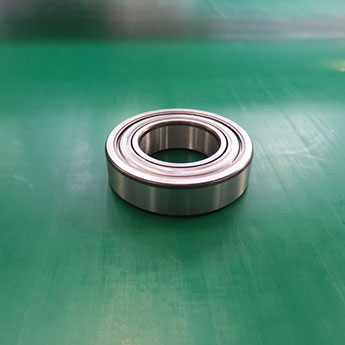Worn Wheel Bearing: Symptoms, Replacement and Importance of Timely Repair

The wheel bearing is an important component of your vehicle's suspension system. It is responsible for supporting the weight of the vehicle and ensuring a smooth rotation of the wheels. Over time, due to various factors, wheel bearings can become worn, leading to a number of symptoms that can affect the performance and safety of your vehicle. In this blog post, we will discuss the symptoms of worn wheel bearings, the importance of timely repair, and how to replace them.
Symptoms of Worn Wheel Bearings:
1. Grinding or Roaring Noise: A grinding or roaring noise coming from the wheels is the most common symptom of worn wheel bearings. The noise is more pronounced when making turns or when driving at high speeds.
2. Vibration: If your steering wheel vibrates while driving, it may be due to worn wheel bearings. The vibration is usually felt on the steering wheel or the floorboard.
3. Uneven Tire Wear: If you notice that your tires are wearing unevenly, it may be due to worn wheel bearings. Uneven tire wear can cause poor handling and traction, as well as a decrease in fuel efficiency.
4. Steering Instability: Worn wheel bearings can also cause your steering to feel loose or unstable. This can make it difficult to control your vehicle, especially at high speeds.
Importance of Timely Repair:
It is important to have your worn wheel bearings repaired as soon as possible. A failure of the wheel bearing can lead to dangerous and costly consequences. Here are some reasons why timely repairs are important:
1. Safety: A worn wheel bearing can cause your vehicle to become unstable and can lead to a loss of control, especially when making turns at high speeds. This can be hazardous and could cause accidents.
2. Other Component Failure: A worn wheel bearing can also cause damage to other components of the suspension system, such as the brake rotors, tie rods or struts.
3. Cost-Effective: Timely repairs can save you money in the long run by preventing costly damages to other components of the vehicle.
Replacement of Worn Wheel Bearings:
If you suspect that your wheel bearings are worn, it is important to have them checked by a professional mechanic. Here's how to replace worn wheel bearings:
1. Raise the Vehicle: You will need to lift your vehicle off the ground to replace the wheel bearings. Make sure you use a jack or a lift that is rated for your vehicle.
2. Remove the Wheel: Remove the lug nuts and take off the wheel.
3. Remove the Brake Caliper and Disc Rotor: Remove the bolts that hold the caliper in place and carefully remove it, taking care not to damage the brake line. Remove the bolts that hold the disc rotor in place.
4. Remove the Stub Axle: Remove the nut that holds the stub axle to the wheel hub and pull the stub axle out.
5. Remove the Wheel Hub: Remove the bolts that hold the wheel hub in place and pull it off.
6. Remove the Old Bearing: Use a bearing puller to remove the old bearing from the wheel hub.
7. Install the New Bearing: Press the new bearing into the wheel hub using a bearing installer. Make sure it is properly seated and secured.
8. Reinstall the Components: Reinstall the wheel hub, stub axle, disc rotor, brake caliper, and wheel.
9. Test Drive: Take your vehicle for a test drive to ensure that the wheel bearings are properly installed and aligned.
In conclusion, worn wheel bearings can cause a number of symptoms that can affect the performance and safety of your vehicle. Timely repair is important to prevent further damages and costly repairs. If you suspect that your wheel bearings are worn, have them checked by a professional mechanic and replaced as soon as possible. Remember, safety comes first.